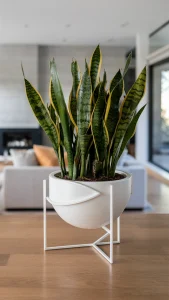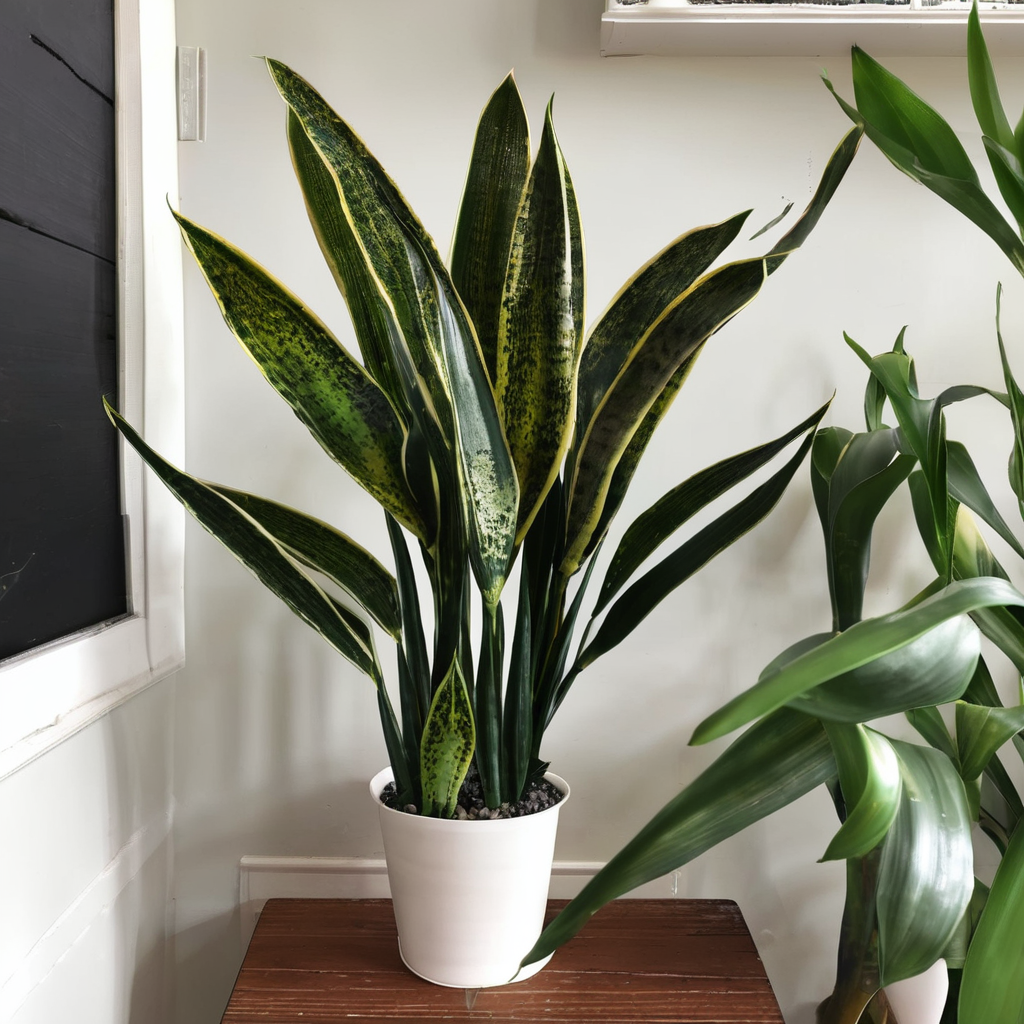If you’re looking for a low-maintenance houseplant that can survive all sorts of care mistakes, look no further than the snake plant. With its tall, upright leaves in shades of green, yellow, and white variegation, the snake plant brings an air of the tropics to your indoor space.
How to Grow and Care for Snake Plant
Better known by its botanical name Sansevieria, the snake plant thrives with very little care or attention from plant parents. That’s why it’s a popular choice for busy schedules or brown thumbs. In this guide, I’ll share everything you need to know to pot and care for your new snake plant so it sticks around for years to come.
Choosing a Pot
Snake plants prefer small to medium-sized pots that allow the soil to dry out between waterings. Look for a plastic or glazed ceramic container with drainage holes around 6-8 inches in diameter. Terra cotta is also a good option as it wicks moisture away from the roots.
For a snake plant, go with an open container that has at least an inch between the soil line and pot rim. This ensures the soil can dry out without sitting in water. Use a well-draining potting mix specifically formulated for houseplants.

Potting Your Snake Plant
Gently remove the plant from its nursery pot and loosen any circling or tightly-packed roots. Place a thin layer of potting mix in the new container and nestle the root ball into the center.
Fill the sides with more soil, packing it down firmly as you go. Leave space between the soil and pot rim for watering. Give the plant a thorough drink, then let the excess water drain away.
Light and Temperature
Snake plants tolerate a wide variety of light conditions, from very low to medium indirect sunlight. They do especially well in bright rooms just out of direct sun. North-facing windows provide the perfect growing conditions.
These plants thrive between 60-80°F and can even withstand short stints outside in protected areas during summer. Just don’t expose leaves to direct sun, which can scorch them. Rotate pots occasionally for even growth.

Water and Humidity
Allow the top inch of soil to dry out completely between waterings. Check the drainage holes for excess moisture too. During the growing season from spring to fall, water every 2-3 weeks.
Cut back watering to once a month or less in winter when the plant is semi-dormant. Snake plants are very forgiving of dry conditions and can go several weeks between drinks. They’re also great for low-humidity homes.
Fertilizing Your Snake Plant
Feed your snake plant every 2-3 months during the spring and summer growing season with a diluted liquid houseplant fertilizer. I recommend a ratio of 1⁄4 strength to avoid burning tender roots.
Apply to the soil and water it in well. Cut back fertilizer to just a few times during the fall and winter when growth slows. Snake plants are not heavy feeders.
Pruning and Propagation
Snake plants can be divided or propagated from offsets that form at the base of the plant. Simply remove plantlets and repot individually in small pots. Place cuttings directly in soil to root.
You can also control legginess by pruning off any leaves that have become tall and thin. Cut them down to the soil line and new growth will emerge.
Pests and Problems
These nearly indestructible plants are generally pest and problem free. Occasional issues may include root rot from overwatering, which causes yellow leaves. Improve drainage and reduce watering to remedy.
With just the basic care outlined here, your snake plant will reward you with its air-purifying abilities and resilience for many years to come. Let me know if you have any other questions!
